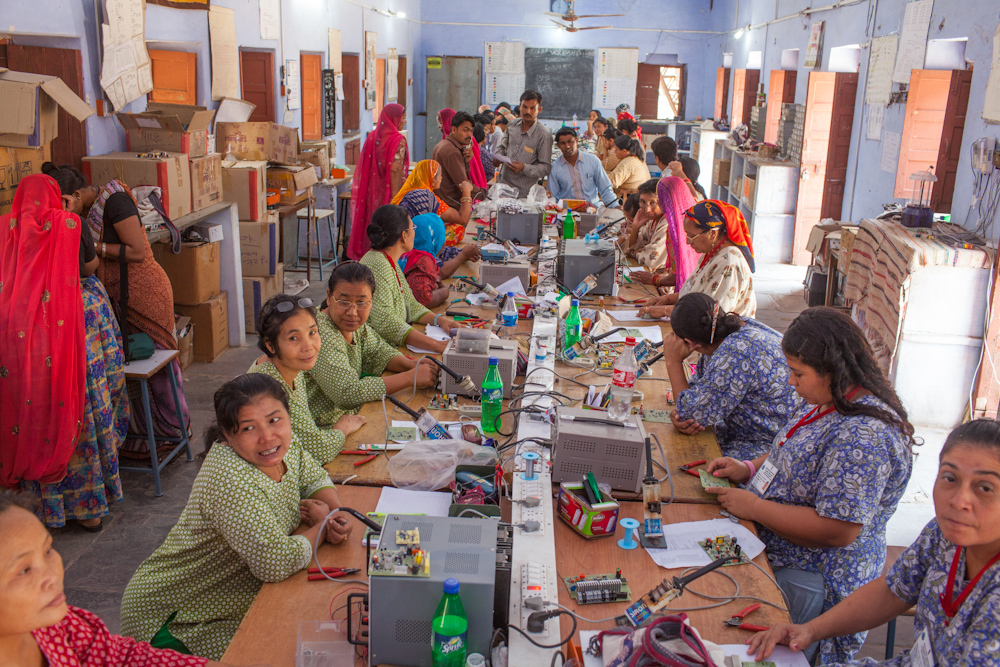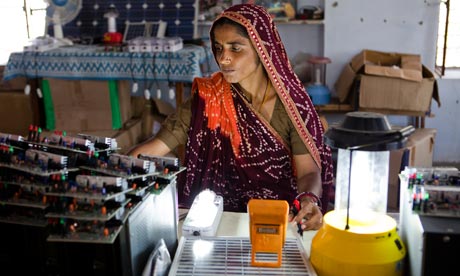“A Forty-five-year love story with the poor, those making less than a dollar a day”
More than 40 years ago, Bunker Roy, a young Indian fresh out of grad school, decided to work in one of India’s poorest states. There, in the village of Tilonia, Rajastan, he befriended Merghaj, a local farmer. Together they had the vision to create an educational institution that would serve as a formal center for the collection and infusion of traditional and vocational knowledge. In 1972, the two partners leased an abandoned government building in the region and started the training center that would turn into Barefoot College, a one-of-a-kind grassroots initiative, with a simple and powerful philosophy that may represent the missing ingredient in global poverty alleviation.

The Philosophy:
Soon after its inception, the visionaries behind the project learned that their most powerful instrument for bringing about a substantial change was the empowerment of rural women. Once trained, men most often headed to cities in search of jobs, and seeing this, Roy realized that the purposeful recruitment of women would be the most crucial aspect of their mission to eradicate rural poverty. Women, he soon learned, prioritize improving educational standards, community stability, and place-based skills more than men.
The Barefoot team developed educational workshops on the need for solar power, a stable water source and basic infrastructure, and targeted these toward illiterate and semiliterate women from rural communities in the Global South. Women from South East Asia and Africa were brought to Tilonia and trained in a cross-cultural classroom for six months. They left Tilonia as solar engineers, taking back to their villages knowledge of how to harness solar energy for electricity, water desalination and cooking.
Using this strategy, the Barefoot College has empowered women in over 70 countries, giving them the leadership tools to act as self-sufficient agents of change in their own regions. These women have gone on to help their communities rise above the poverty line.
The Story of One Woman:
19 year old Santosh Devi grew up covering her face in the presence of the upper caste in her village in Rajasthan. She was a semi-literate, a woman, and belonged to the lowest caste, the untouchables. Today everyone in her village seeks her out for help.
She is her village’s first solar engineer. And she is her country’s first untouchable solar engineer.

Why go Barefoot?
In four decades, Barefoot College has educated women from 77 countries, provided 500,000 people with access to light, replaced 500 million liters of kerosene with renewable energy sources, and supplied 18,000 people with clean and sustainable drinking water. As of 2014, its annual expenditure is 2.5 million USD. To put this in perspective, the annual budget for USAID was 35.6 billion USD for the year 2015.
Barefoot College has created a model that has been proven to bring about rapid poverty alleviation, on a budget. Its strategy shows that a grassroots approach, focused on imparting usable knowledge to the most impactful community member, is one of the most economically efficient techniques available to us. In fact, UN Women have taken up its model and have been working in partnership with the College since 2004.
As a global community, it is high time we inspect our current international frameworks to reduce the percentage of people living below the poverty line. While they have had their successes, several studies have pointed out that most international aid programs today have a rigid (and failing) top down approach, with high operational costs and relatively little transparency. Taxpayers all over the world contribute to funding these programs, and it is time that we think about how that money should be invested in our economic future. Perhaps it is time to shift to a different framework.

To learn more about the Barefoot Strategy, you can visit its website as the first step to bringing about substantial change in understanding the breadth of the economic development tools available to us.
